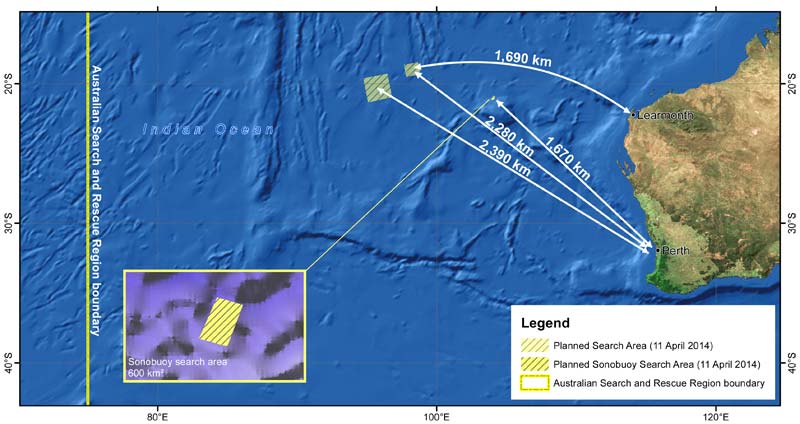Another possible signal heard in Flight 370 search
Updated: 2014-04-11 10:46
(Agencies)
 |
|
This chart release by Australia's Joint Agency Coordination Center shows search area being undertaken April 11, 2014. |
Investigators believe the plane went down in the southern Indian Ocean based on a flight path calculated from its contacts with a satellite and analysis of its speed and fuel capacity, but the content of the flight recorders is essential to solving the mystery of why the plane veered so far off-course.
The search for the recorders is increasingly urgent because their locator beacons have batteries that last about a month and may fail soon.
An Australian government briefing document circulated among international agencies involved in the search said the acoustic pingers likely would continue to transmit at decreasing strength for up to 10 more days, depending on conditions.
Once there is no hope left of hearing more sounds, the Bluefin sub will be deployed.
Complicating matters, however, is the depth of the seabed in the search area. The sounds detected earlier are emanating from 4,500 meters (14,763 feet) below the surface, which is the deepest the Bluefin can dive.
"It'll be pretty close to its operating limit. It's got a safety margin of error and if they think it's warranted, then they push it a little bit,'' said Stefan Williams, a professor of marine robotics at Sydney University.
The search coordination center said it was considering options in case a deeper- diving sub is needed. But Williams suspects if that happens, the search will be delayed while an underwater vehicle rated to 6,000 meters (19,700 feet) is dismantled and shipped from Europe, the US or Japan.
Williams said colleagues at the Woods Hole Oceanographic Institution in Massachusetts had autonomous and remotely operated vehicles that dive to 11 kilometers (36,100 feet), although they might not be equipped for such a search.
Underwater vessels rated to 6,500 meters (21,300 feet) could search the seabed of more than 90 percent of the world's oceans, Williams said.
"There's not that much of it deeper than 6 1/2 kilometers,'' he said.
Williams said it was unlikely that the wreck had fallen into the narrow Diamantina trench, which is about 5,800 meters (19,000 feet) deep, since sounds emanating from that depth would probably not have been detected by the ping locator.